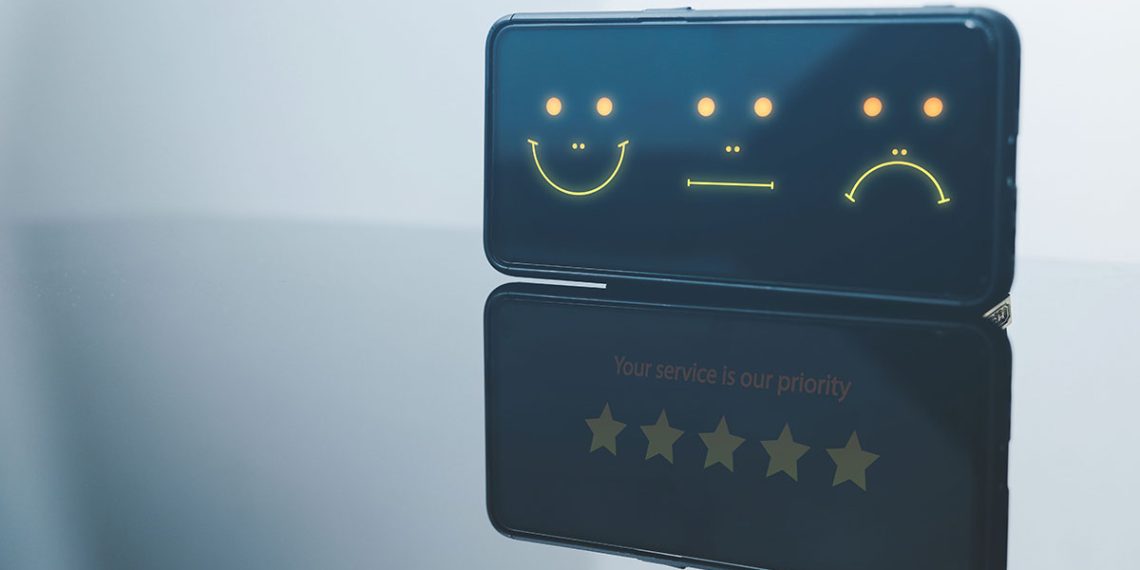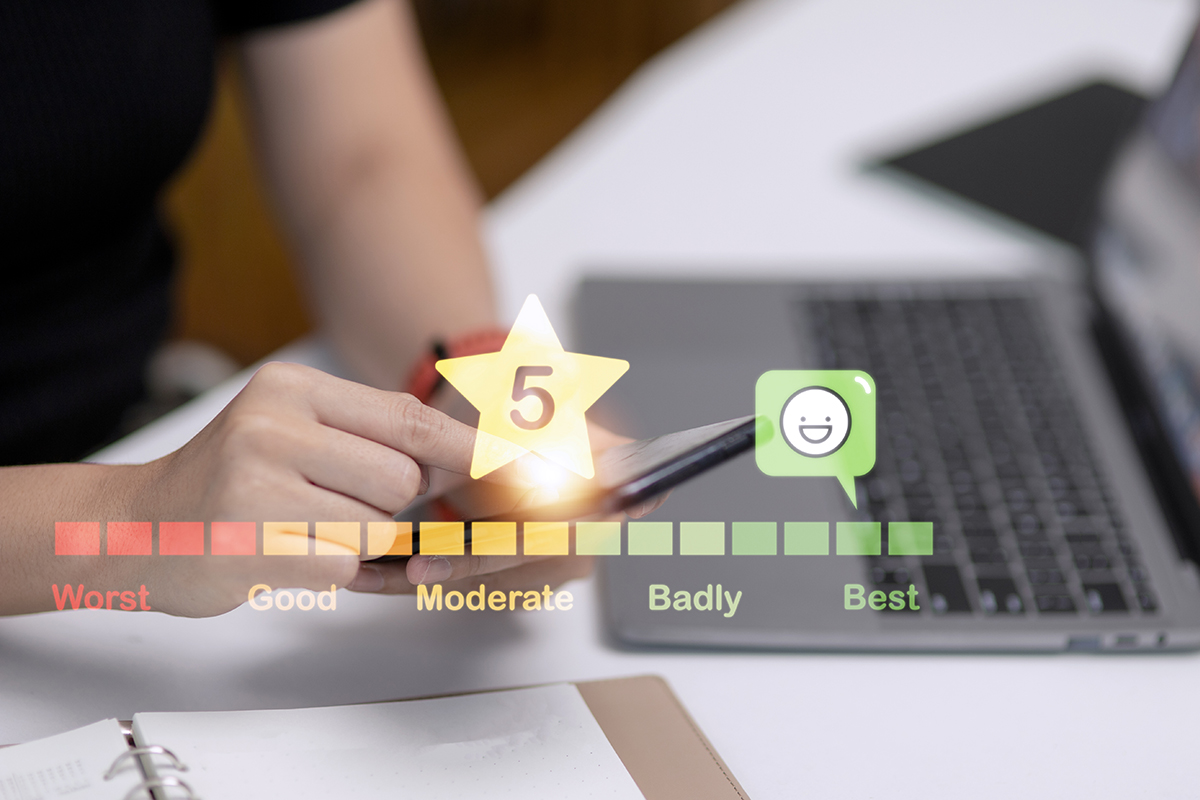Businesses thrive when they leave their customers satisfied. It’s only when their current customer base is happy that they can think of scaling their operations and bringing in more customers.
But how can brands gauge customer satisfaction?
Indeed, customer satisfaction is intangible and hard to notice. However, certain customer satisfaction measurement tools make it extremely easy to gather feedback and determine whether or not the current scheme of things leaves customers satisfied.
One such customer satisfaction measurement tool is Net Promoter Score. In this guide, we will discuss everything you ought to know about Net Promoter Score, NPS formula, calculation, types, and examples.
So let’s cut to the chase and dive right in.
Collect feedback with JustFeedback
JustFeedback helps your business increase profits and reduce risk by improving your customer experience
What is Net Promoter Score?
Customer loyalty and satisfaction can be effectively measured using Net Promoter Score. This is essentially a metric or index that helps measure how likely your customers will recommend your brand, products, and services to other people in their network.
You can measure customers’ loyalty to your products and services. The score is gathered through the responses left by customers in an NPS survey. The surveys are shared with customers after an interaction, transaction, or event.
NPS surveys are quite easy to form and deliver. Moreover, these have a simple scoring system. To add to its simplicity, most companies can generate a Net Promoter Score based on a single question —
On a scale of 0-10, how likely are you to recommend our product/service/company to a friend or colleague?
Once the respondents submit their scores, you can place the customers in one of the three categories — 1) promoters, 2) passives, and 3) detractors.
Promoters are essentially customers that are satisfied with your brand and are willing to recommend or promote it to their friends and families. Promoters are likely to respond with a 9-10 score as they feel more positive about your product or service.
Passives are customers that did not have a great experience doing business with your brand. However, such customers are not likely to bad mouth your company. Passives will rate your company 7-8 on the NPS survey.
More importantly, passives are not included in your overall NPS score since the nature of their response is neutral.
Then comes the detractors — respondents that you should be wary of. Detractors are customers that were highly dissatisfied with your brand. These are unhappy customers that will rate your service with the least score.
Not just that, detractors are likely to damage your brand reputation and spread negative word or reviews.
Why NPS is important to measure customer loyalty?
The Net Promoter System, now popular as Net Promoter Score or NPS, was developed by Bain & Company’s Fred Reichheld in 2003.
Didn’t companies gauge customer loyalty before 2003? Well, they did, but with traditional customer satisfaction survey methods that were long and complicated. Moreover, the traditional methods didn’t provide many actionable insights.
The Net Promoter System was specifically designed to help customers leave quick feedback. Companies were able to use NPS surveys more efficiently by placing them strategically in the customer journey.
As brands can quickly collect responses from customers and work on them, NPS data helps them get ahead of the competition.
No wonder why two-thirds of the companies in the Fortune 1000 list use NPS as their go-to customer satisfaction and loyalty measurement tool.
Advantages of using NPS surveys?
Besides this, there are many lucrative advantages of using the Net Promoter System or Net Promoter Score. Let’s discuss them briefly.
1. Simplicity
The Net Promoter System is the easiest way to collect customer feedback. The simplicity of the net promoter system makes it easier for companies to gain key customer insights and push toward building better relationships with them.
2. Provides quick feedback
Collecting customer feedback is just one part of the story. You will have to take considerable action based on the feedback. Net promoter score survey helps companies make significant improvements and changes to boost customer loyalty.
3. Straight-forward
Net promoter score surveys are easy to conduct since they are straightforward and have specific questions to answer. Moreover, these help customers share their feedback quickly. This is one of the main reasons why NPS surveys have a high response rate.
4. Helps identify the target segment
Are you still confused about your target segment? You should be using Net Promoter Score surveys since they help identify the target audience. Not just that, the surveys give you an idea of what the customers want out of your services.
With a better understanding of your target audience, you will be in the right position to enhance your products and services.
5. Decreases customer churn
If you are clueless about why customers leave your brand, you should invest in developing NPS surveys. This is because it helps find out which customers are likely to leave and why.
Most importantly, you get to reach out to dissatisfied customers and figure out what went wrong.
6. Competitive advantage
Most companies in your competition wouldn’t care about collecting customer feedback or if they do, they will only conduct annual surveys. In other words, they do not possess enough data about what their customers like or dislike.
Net Promoter Score surveys can easily put you a step ahead of the competition as these surveys are conducted regularly.
7. Puts focus on the customer
Lastly, the NPS system helps companies put their focus on what matters the most — customers. Without customers, your company is nothing. Therefore, with NPS surveys, you can build an organizational culture of customer success.
The idea is to deliver services and products that help solve customers’ problems. The customers will then return the favor with customer loyalty!
Disadvantages of using NPS surveys?
Indeed, NPS has certain advantages over other customer satisfaction measurement tools. But, it too has some significant disadvantages. Let’s discuss them in detail.
1. You cannot rely on NPS too much
Companies that blindly depend on NPS scores tend to become delusional as despite being simple and quick, these scores don’t paint the entire picture. It’s true that most companies rely on NPS scores to fathom customer loyalty.
But NPS scores alone aren’t going to help them retain customers. You just cannot understand the customer’s feelings completely by asking them only one question, can you?
Therefore, we suggest you don’t depend on the NPS scores entirely. Couple them with customer feedback surveys to generate more comprehensive and well-rounded customer experience insights.
2. Lack of deep insights
Another major problem with the Net Promoter Score method is the lack of deep insights. You don’t get enough information to confidently decipher why customers, stakeholders, employees, and future customers felt about your products and services in detail.
NPS doesn’t give brands the opportunity to ask more questions and understand why someone gave them positive or negative feedback. To overcome this issue, you will have to personally connect with customers through email and ask follow-up questions.
This makes NPS an incomplete customer satisfaction measurement tool when used in isolation without other insights to backup the results.
3. Doesn’t address employee issues
Net Promoter Score doesn’t help with internal employee satisfaction evaluation as well. This is because employee ratings don’t always resonate with the feelings they have for the organization.
You cannot ignore the impact of employee well-being and mental health on the company’s performance, especially since the Covid-19 outbreak.
Studies show that while almost 5.5 million employees didn’t score themselves highly on mental health, only 50 percent of them were willing to discuss the impact of the pandemic on their work lives.
How to implement a Net Promoter Score system?
1. Figure out the customer touch points you wish to improve
Make a list of all the customer touch points that impact the business-customer relationship. This will give you an idea of which NPS surveys you should run — Transactional or Relationship NPS surveys.
2. Choose an NPS software
Indeed, you can run NPS surveys without using software. But that’s not how it’s ideally done. When you use NPS software, you can easily create intelligent NPS surveys and save a lot of time doing it.
Not just that, you can use the software to distribute the NPS surveys to the customers via various channels while making sure the surveys are triggered at the right events and transactions. NPS software helps generate in-depth NPS reports and analyzes too!
3. Create and customize an NPS survey
You want to generate accurate results. To achieve that, you should nail your net promoter score question and the reasoning question. Make sure you customize the NPS survey to effectively ask the intended question.
4. Execute perfect survey distribution
You can share NPS surveys with customers through Kiosk surveys, email surveys, SMS surveys, website surveys, iPad surveys, Android surveys, mobile surveys, and more. The idea is to leverage the customer-touch points across the customer journey.
When should you use a Net Promoter Score survey?
However, you should be willing to nail the timing of the Net Promoter Score survey. Are you wondering what is the best time to send an NPS survey? Well, you can send NPS surveys in three different circumstances. Let’s discuss them, shall we?
1. After points of purchase
Customers that have just finished a transaction will have the experience fresh in their minds. This is a perfect opportunity to send NPS surveys and gain an understanding of what they think of the customer journey or the brand.
2. After free trials
Make sure you connect with customers that have enrolled for the free trials, especially buyers that discontinue their subscriptions.
Canceling the subscription generally means they didn’t like something about your product or service. Connect and figure out what went wrong.
3. After canceling subscription
What if a long-time customer decides to stop using your product or service? How should you tackle this situation? Well, send an NPS survey and collect the feedback.
Re-engage them personally to understand the reason behind them discontinuing business with your brand.
How to improve Net Promoter Score?
Improving the Net Promoter Score isn’t rocket science. It’s all about how well you communicate with the customers upon successfully gathering their NPS survey responses or measuring customer loyalty.
You will have to understand that promoters, passives, and detractors will stay with your business if you attend to their needs, complaints, and expectations.
Let’s figure out how you should deal with detractors, passives, and promoters to improve your Net Promoter Score over a period.
How to connect with detractors or unhappy customers?
Detractors are unhappy customers. How should you deal with them to improve Net Promoter Score? The ideal way to treat detractors is by sending a personal email. The email should cater to their dissatisfaction, specifically asking what went wrong.
This is an excellent way to re-engage with them. Prioritize connecting with the detractors as these customers won’t take long to find an alternative. Show that you care about their feedback and want to connect to prevent future unwanted circumstances.
How to connect with passives?
Indeed, passives are the respondents that shared neutral feedback. But, should you take them for granted? Absolutely not. If you pay close attention, you’ll see that passives are customers that are very close to becoming your loyal customers.
It’s only small gaps in your products and services that bring second thoughts to them. How can you improve your Net Promoter Score while dealing with passives?
Simply offer an incentive or conduct online competitions to re-engage passives. This is important because passives won’t provide open-ended feedback. So, it is easier to come up with a suitable incentive.
How to connect with promoters?
Promoters love your brand, products, and services. And that’s the only reason why companies often take them for granted. This customer segment brings in repeated purchases and maximizes your business revenue.
The only way to use this customer segment to improve NPS score is by showing gratitude. Promoters have been loyal to your products and services. They have the nicest things to say about your company.
You can make them score your services higher by offering free merchandise, perks, discounts, or upgrades.
What about the non-respondents?
Non-respondents are customers that didn’t respond to your NPS surveys. And most companies will have a large group of non-respondents. So, overlooking this group would be a mistake. Instead, you should re-engage with them and gain more insights.
This can be done through a live conversation or email.
Example NPS questions worth asking customers
Maybe you have just started creating NPS surveys. It can be a little challenging to figure out the right questions to ask the customers.
This is because the way you frame the survey questions impacts the accuracy of the response. If you are clueless as to where to start, we suggest you stick to the basics.
Here are some open-ended NPS survey questions we suggest you ask your customers.
- What was missing or disappointing in your experience with us?
- How can we improve your experience?
- Which features do you value/use the most?
- What do you like most/least about our company?
- How do you benefit from using our product/service?
- On a scale of 0 to 10, how likely are you to recommend our business?
- How does our product meet your needs?
- What problem are you trying to solve with our product?
- Why did you opt for our product over our competition?
- What is the one thing we could do to make you happier?
The buck doesn’t stop there. Upon successful survey completion, make sure you deliver a “thank you” message. The “thank you” message will differ based on the survey result.
If the respondent was a promoter, you can leave a message thanking the promoter for doing business with you and suggesting opportunities for improvement.
If the respondent was passive, you can leave a neutral message thanking the customer and reassuring them that you are working towards improving the products and services through NPS feedback.
The detractors are the ones that will leave negative reviews. You can share a “thank you” message valuing their NPS feedback and reassuring them a representative will reach out to them to learn more about their customer experience.
Final thoughts!
There you have it!
This Net Promoter Score system guide is aimed at making you well-acquainted with the concept of gathering NPS survey responses and making sense of them.
We highly recommend you follow the guide and develop user-friendly NPS surveys to make it easier for customers to share honest feedback. It’s crucial that the survey reflects your will to listen and learn from your customers, regardless of their feedback.
Besides that, sticking to the fundamentals will help you make the most of the Net Promoter System. Did you find this guide helpful? Let us know in the comments.
Also, don’t forget to check out other informative posts on NPS on the blog as we regularly share tips and tricks to boost your customer experience.




